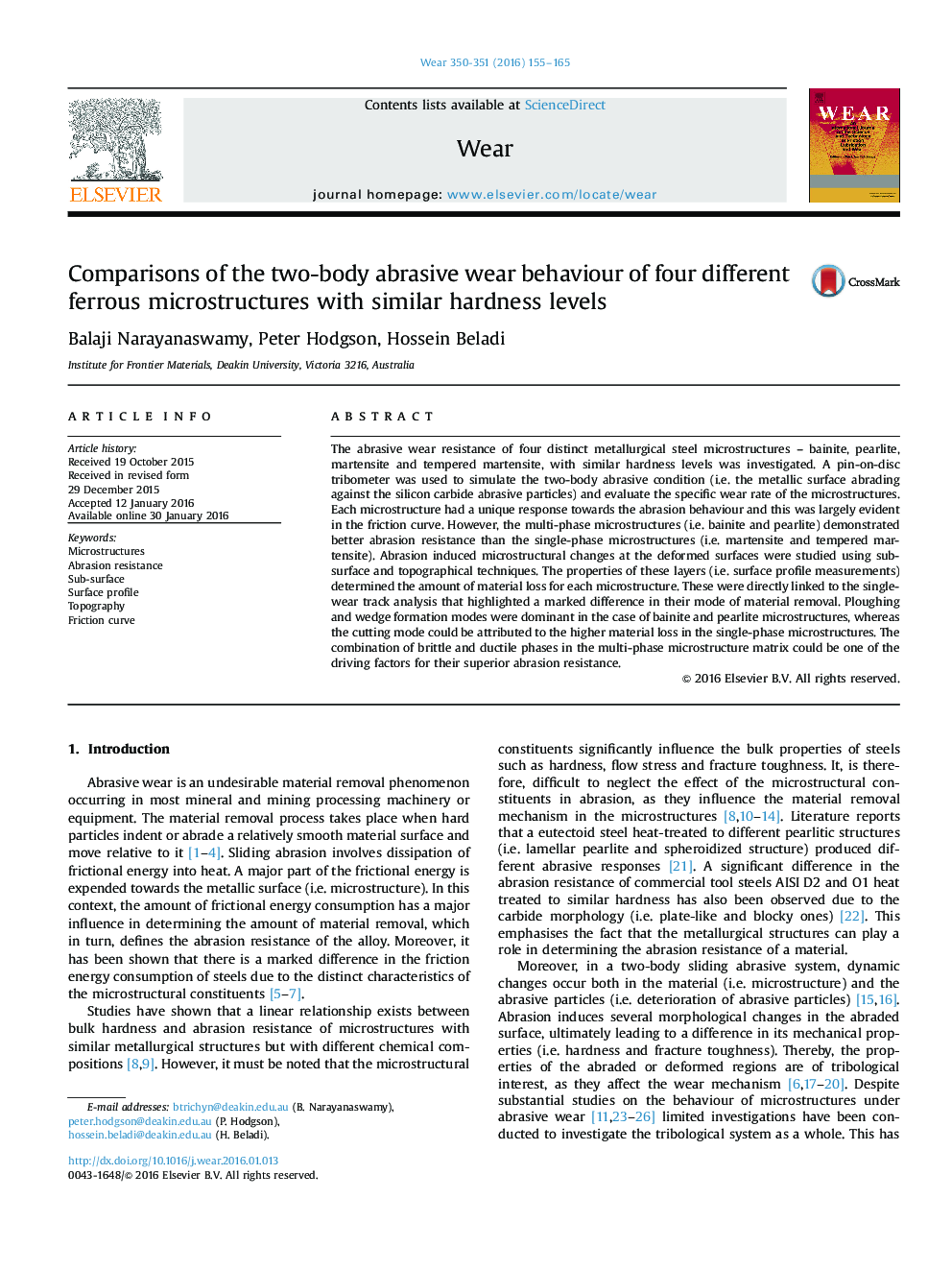| کد مقاله | کد نشریه | سال انتشار | مقاله انگلیسی | نسخه تمام متن |
|---|---|---|---|---|
| 616944 | 1454966 | 2016 | 11 صفحه PDF | دانلود رایگان |
• Abrasive wear resistance of microstructures with similar hardness was analysed.
• The microstructural constituents influenced their abrasive wear behaviour.
• Sub-surface investigations revealed unique abrasive response of the microstructures.
• Distinct material removal mechanisms were observed in the microstructures.
• The work hardening behaviour and wear resistance of the material are interrelated.
The abrasive wear resistance of four distinct metallurgical steel microstructures – bainite, pearlite, martensite and tempered martensite, with similar hardness levels was investigated. A pin-on-disc tribometer was used to simulate the two-body abrasive condition (i.e. the metallic surface abrading against the silicon carbide abrasive particles) and evaluate the specific wear rate of the microstructures. Each microstructure had a unique response towards the abrasion behaviour and this was largely evident in the friction curve. However, the multi-phase microstructures (i.e. bainite and pearlite) demonstrated better abrasion resistance than the single-phase microstructures (i.e. martensite and tempered martensite). Abrasion induced microstructural changes at the deformed surfaces were studied using sub-surface and topographical techniques. The properties of these layers (i.e. surface profile measurements) determined the amount of material loss for each microstructure. These were directly linked to the single-wear track analysis that highlighted a marked difference in their mode of material removal. Ploughing and wedge formation modes were dominant in the case of bainite and pearlite microstructures, whereas the cutting mode could be attributed to the higher material loss in the single-phase microstructures. The combination of brittle and ductile phases in the multi-phase microstructure matrix could be one of the driving factors for their superior abrasion resistance.
Journal: Wear - Volumes 350–351, 15 March 2016, Pages 155–165
